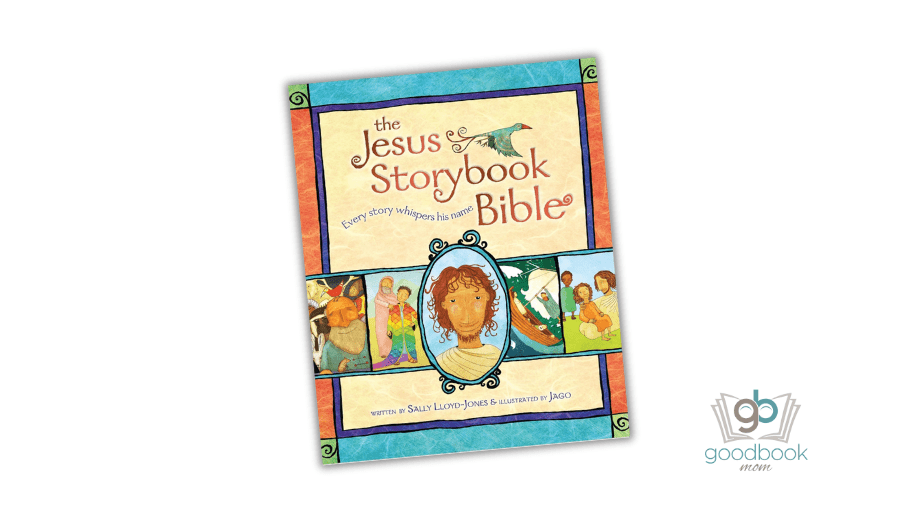
Summary
This incredibly well-known storybook Bible retells the most familiar Bible stories (44 total) and is fully illustrated.
Mom Thoughts
 This storybook Bible is the first to become wildly popular and has inspired a flood of fully illustrated storybook Bibles. The art is bold and very appealing to children and Sally Lloyd-Jones is a very talented writer, able to craft a compelling and lyrical text. From the surface, I can see why this has become so popular, and I used to recommend this myself. However, after being challenged to take a closer look at the text, I now do not recommend it and have several concerns about this well-known title.
This storybook Bible is the first to become wildly popular and has inspired a flood of fully illustrated storybook Bibles. The art is bold and very appealing to children and Sally Lloyd-Jones is a very talented writer, able to craft a compelling and lyrical text. From the surface, I can see why this has become so popular, and I used to recommend this myself. However, after being challenged to take a closer look at the text, I now do not recommend it and have several concerns about this well-known title.
While I will list more specifics at the end, I have two serious concerns about the book as a whole.
1. While sin is mentioned several times (which has become less common in storybook Bibles as a whole), there is no mention of hell or what happens after we die. While it does say that Jesus died for our sins, there is no mention of why sin is a problem which leads to my second concern.
2. Some of the language sounds like unlimited atonement and much even sounds like universalism.
There is no clarity given anywhere that to be a child of God, you must be in Christ. “Child of God” is used incorrectly referring to all people and it’s very easy to read the truth of the Gospel that you know into the text, but what is actually written never makes any mention that without Christ we won’t be saved.
“But this is how God will rescue the whole world. My life will break and God’s broken world will mend. My heart will tear apart- and your hearts will heal. Just as the passover lamb died, so now I will die instead of you. My blood will wash away all of your sins. And you’ll be clean on the inside- in your hearts.”
The only time the author pushes back these ideas is on the very last page where it reads,
“For anyone who says yes to Jesus
For anyone who belives what Jesus said
For anyone who will just reach out to take it
Then God will give them this wonderful gift:
To be born into
A while new Life
To be who they really are
Who God always made them to be-
Their own true selves-
God’s dear
Child.”
There are also undertones of our happiness being God’s greatest concern. In the retelling of the Prodigal Son, it reads,
“God is like the dad who couldn’t stop loving his boy. And people are like the son who said, ‘Does my dad really want me to be happy?’ Jesus told people this story to show them what God is like. And to show people what they are like.”
When the Israelites are wandering in the desert,
“‘God doesn’t want us to be happy,’ they said. It was the same lie that Adam and Eve had heard all those years before.”
There are also many instances where the author takes incredible liberties with Scripture, for example, when the children came to Jesus:
“Would you have done just what these children did- run straight up to Jesus and let him pick you up in his arms and swing you and kiss you and hug you and then sit you on his lap and listen to your stories and your chats?”
While it sounds lovely, none of these things are in Scripture. The author makes this a regular habit. This may not bother some, but it’s fairly permeating throughout.
My final concern is about using the phrase “God’s dream” multiple times.
“From the beginning, God had a shining dream in his heart. He would make people to share his Forever Happiness.”
“God had a plan- a magnificent dream. One day, he would get his children back.”
At best, these sound like man-centered theology, at worst, open theism.
While that may not be the intent, we have to use the text the author has given us and not assume she meant something else. While this may have seemed like a harsh review, please know it comes from a place of love. I do not put myself in a position of authority over authors, but strive to hold their word to God’s in a way that honors Him.
At A Glance
| Number of Pages | Number of Stories |
|---|---|
| 349 | 44 |
